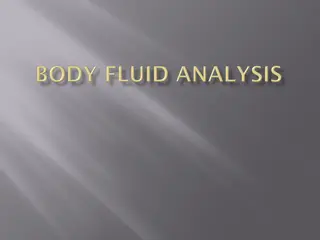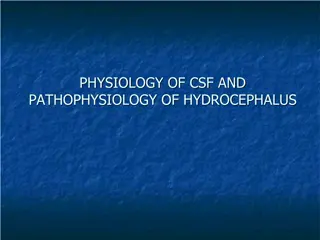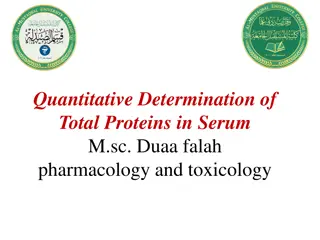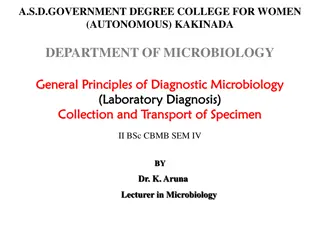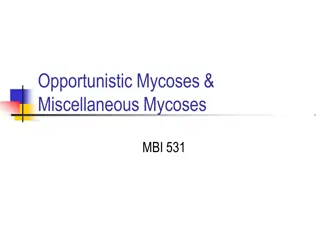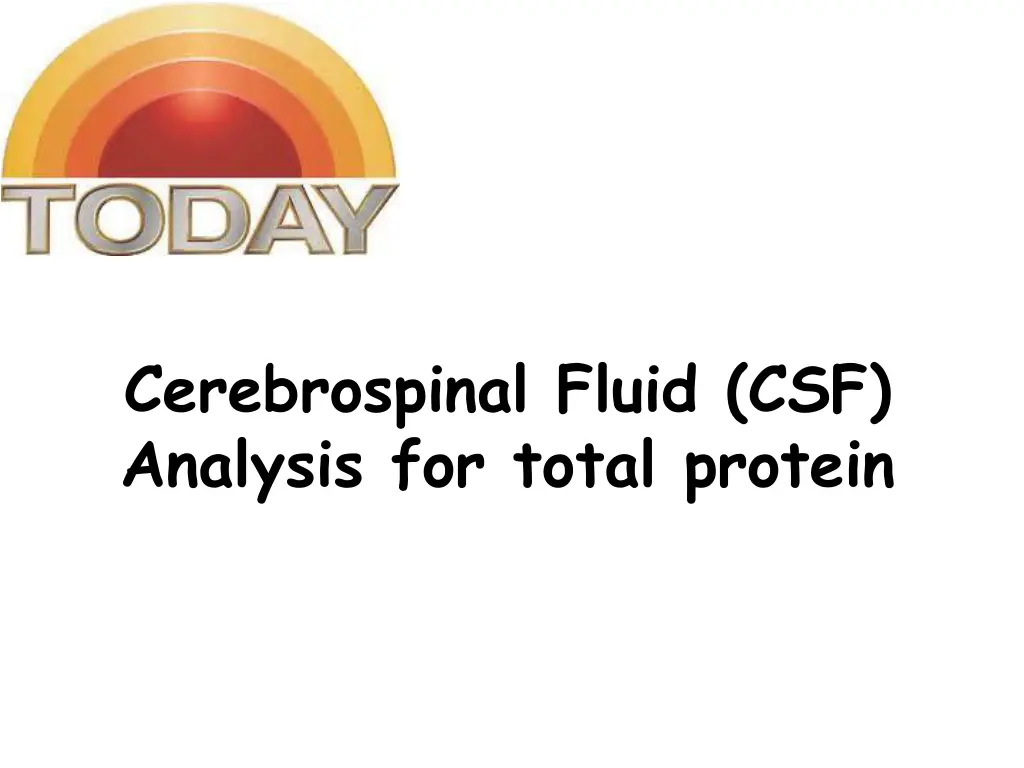
CSF Analysis: Protein Assay, Physical Examination & Chemical Tests
Explore the significance of Cerebrospinal Fluid (CSF) analysis through protein assays, physical examination indicators, and biochemical tests. Learn about sample handling, testing procedures, and the importance of safety precautions.
Download Presentation

Please find below an Image/Link to download the presentation.
The content on the website is provided AS IS for your information and personal use only. It may not be sold, licensed, or shared on other websites without obtaining consent from the author. If you encounter any issues during the download, it is possible that the publisher has removed the file from their server.
You are allowed to download the files provided on this website for personal or commercial use, subject to the condition that they are used lawfully. All files are the property of their respective owners.
The content on the website is provided AS IS for your information and personal use only. It may not be sold, licensed, or shared on other websites without obtaining consent from the author.
E N D
Presentation Transcript
Cerebrospinal Fluid (CSF) Analysis for total protein
CSF sample The specimen should be delivered to the laboratory immediately after collection Glucose and protein estimations should be performed as soon as possible after drawing the CSF specimen If testing is to be delayed, the specimen should be frozen at 200C.
Physical Examination Turbidity Clear- normal Cloudy/ turbid- may indicate the presence of white, or red blood cells, microorganisms, or an increase in protein level
Physical Examination Color Colorless- normal Yellow, orange-brown, or red- may indicate the presence blood
Physical Examination Viscosity Normal CSF should have the same consistency as water Thicker CSF may be seen in patients with certain types of cancers or meningitis.
Chemical Analysis Routinely performed biochemical tests in CSF are: glucose protein (total and specific) lactate lactate dehydrogenase glutamine and acid-base parameters
Remember !! Before any analysis, the fluid should be centrifuged to avoid contamination by cellular elements CSF is the most precious biological material. Often, only small volumes of CSF are available for analysis due to difficulty in collection; hence handle this with care The specimen may contain virulent organisms, so strict safety precautions should be followed.
CSF Protein Assay Protein present in the CSF is detected by a kit based on Biuret method. Biuret reagent when interacts with the peptide bonds in the protein give a blue coloured product The intensity of proportional the amount of protein in CSF the colour is
CSF Protein Assay Color intensity is determined by measuring the absorbance by the colored solution at a wavelength of 546nm Absorbance is measured by an instrument, spectrophotometer
Spectrophotometer Most of visible spectrophotometers are composed of: Light source which works with visible wavelengths (400-700 nm) Monochromator filter for choosing desired wavelength Sample holder (cuvette) Detector Meter or recorder
Procedure Standard Blank Test Reagent 2 ml 2 ml 2 ml - - 40 l CSF sample 40 l - Standard - 40 l - H2O - Mix and incubate for 15 minutes at room temperature Measure absorbance at 546 nm
Calculation Protein conc (g/L) = Abs of sample Conc of standard (60g/L) X Abs of standard
Normal Range Normal reference values for CSF protein: 15-45 mg/dL (0.1 -0.4 g/L)
CSF Examination Report Physical examination Volume Color Appearance Viscosity Chemical examination CSF protein concentration (g/L) Group number&Student names
Abnormal findings of CSF in some pathological conditions Condition Parameter Bacterial Meningitis Tuberculous Meningitis Viral Meningitis Brain Tumor Protein Normal Normal or slightly Glucose Normal or Normal or Chlorides





